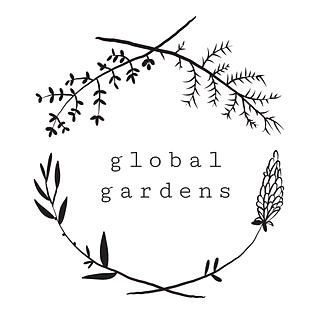BUILDING RESILIENCE IN THE GARDEN
- Global Gardens
- Dec 13, 2022
- 3 min read
On Thursday 8th December, we were joined online by writer and gardener Kim Stoddart for a webinar all about building resilience in the winter garden. Speaking from West Wales, where Kim has a garden 700ft above sea level in an exposed spot prone to drought, flooding and strong winds Kim explained how she has developed a over time learnt how to create a more resilient, low maintenance space using low input approaches.

Kim's garden in West Wales
"This is not gardening or life as usual"
Setting the scene of the multiple challenges we curently face - including climate emergency, biodiversity loss and the rising cost of living, Kim acknowledged that we are living in times where "this is not gardening or life as usual".
She explained why home grown veg is good for the planet, our physical and mental health as well as supporting national food security.
Drawing upon permaculture principles, Kim encouraged us to think about how to be resourceful in the garden. Her key strategies include: thinking about how to make do with and mend the resources we already have as well as to upcycle what may be considered waste in the eyes of others.
Being resourceful in the garden
Kim's top tips for being resourceful in the garden include:
1. Composting: setting up a compost heap in your garden is the number one you step you can take to harness fertility and cycle it back into the soil to support the soil food web.
2. Rainwater harvesting: setting up systems such as water barrels and landscaping interventions such as swales, swathes and ponds are also key steps to becoming more resourceful in the garden. When it comes to water, follow the permaculture phrase of aiming to "slow it, spread it, sink it."
3. Mulching: we explored how there is a wide range of freely available materials for mulching – including woodchip, leaves, cardboard, sheep wool, compost and green manures. You don't need to go out and buy mulch! Kim also encouraged us to let some plants break down naturally in the garden becoming a mulch in the process rather than necessarily clearing them away. As Kim declared, “Neat, tidy gardening is no longer fit for purpose!”
4. Perennial planting: Kim also encouraged us to explore perennialising annuals – such as Purple Sprouting Broccoli, Chard and Kale. Instead of viewing them as annuals, she suggested we leave them grow into next year so the greens keep on coming.
5. Making do and mending in the garden: includes making use of available materials such as plastics, building materials, pallets as well as growing from gardening waste and supermarket.
6. Supporting biodiversity in the garden: creating a garden that supports wildlife is another vital way of being resourceful in the garden. We can do this via conserving or active creation of wild areas which provide overwintering, nesting and foraging habitat for insects (such as nettles and brambles), development of ponds, bug hotels and avoiding bare soil including via the planting of green manures and incorporation of overwintering perennials. Kim encouraged us to avoid digging and instead think about how we can build soil fertility and support the soil food web.
To conclude, Kim suggested we use gardening as a way of connecting with nature, with others and with ourselves.
About Kim
Kim Stoddart is co-author of ‘The Climate Change Garden’ book and is editor of The Organic Way for Garden Organic. She has written for The Guardian Guardian on climate change gardening and resilient GYO since 2013 and has gardening columns in magazines including Grow Your Own and Country Smallholding. In 2021, she was awarded The Beth Chatto Environmental Journalist of the year by the Garden Media Guild.
This webinar was supported by the National Lottery Community Fund in Wales and was part of the Global Gardens 'Together for Our Planet' 2022 climate action festival.












Comments